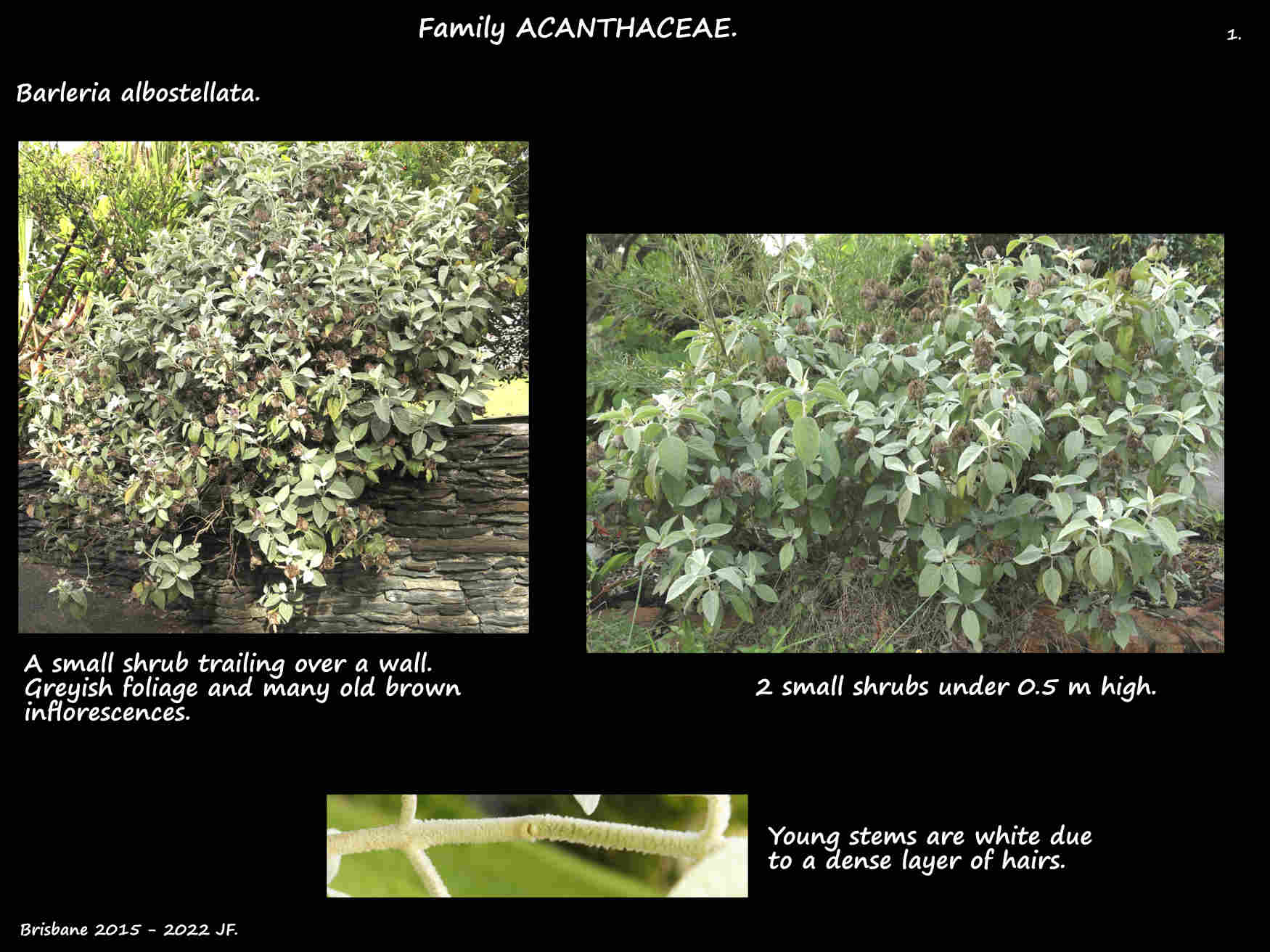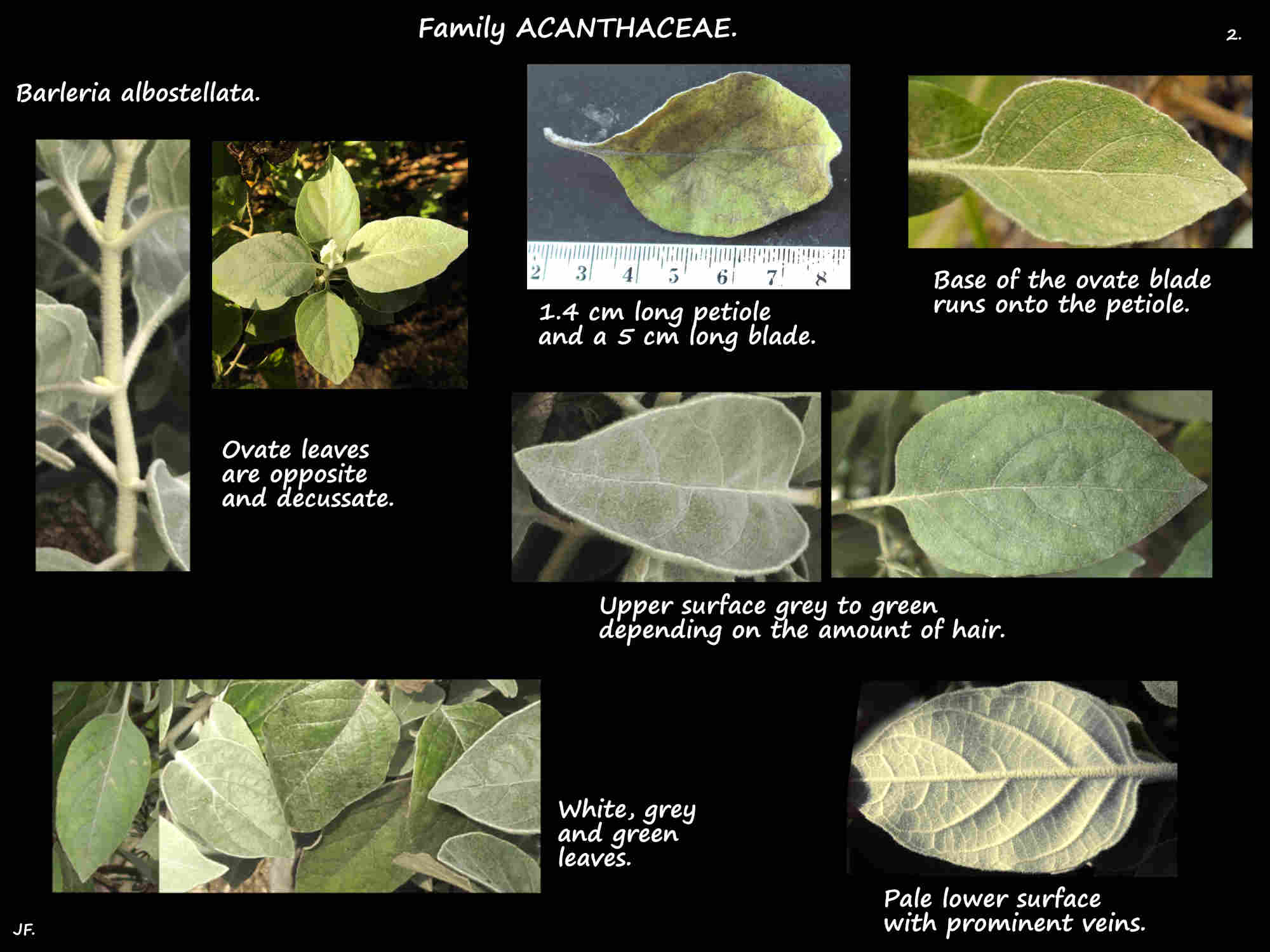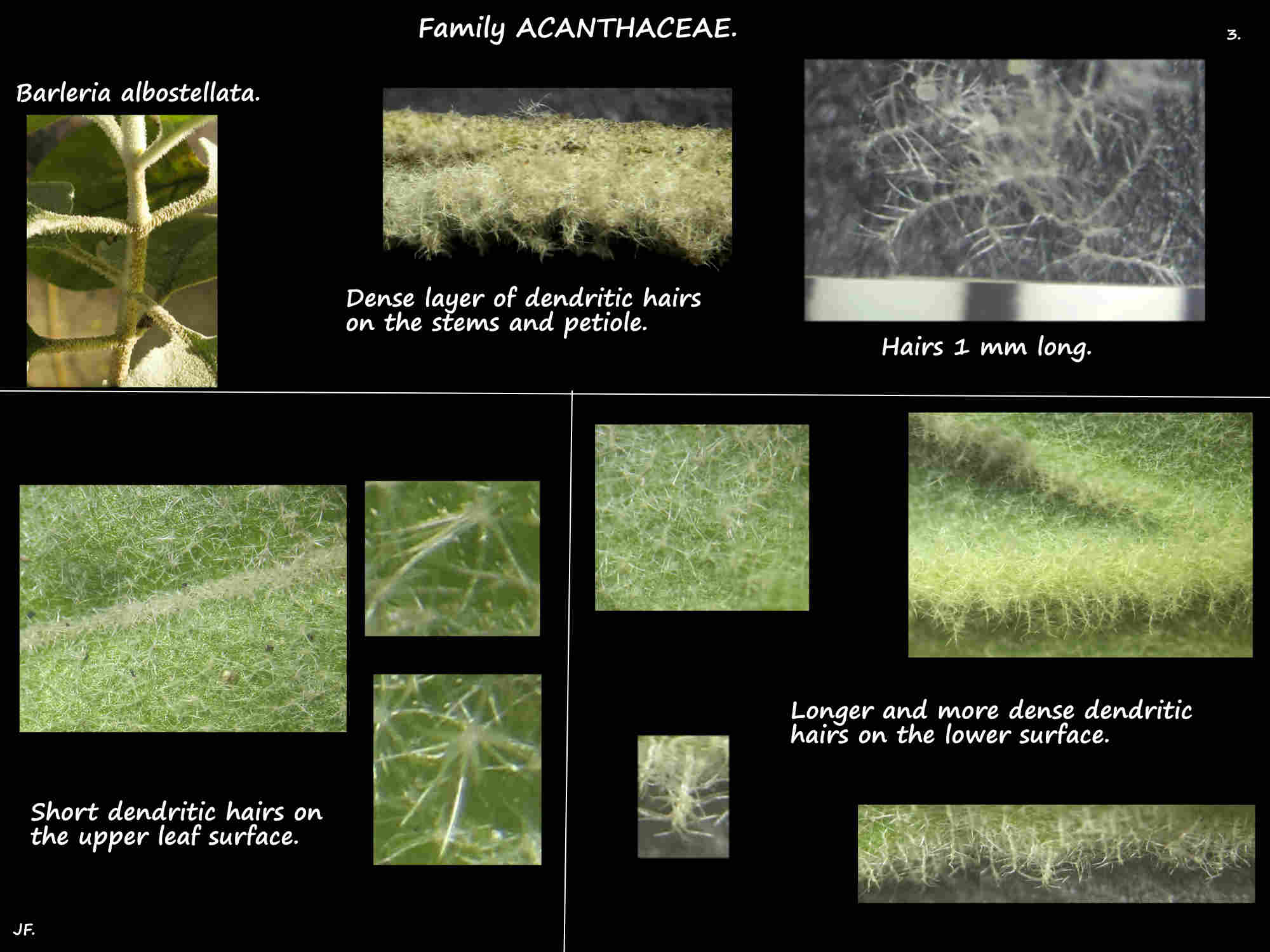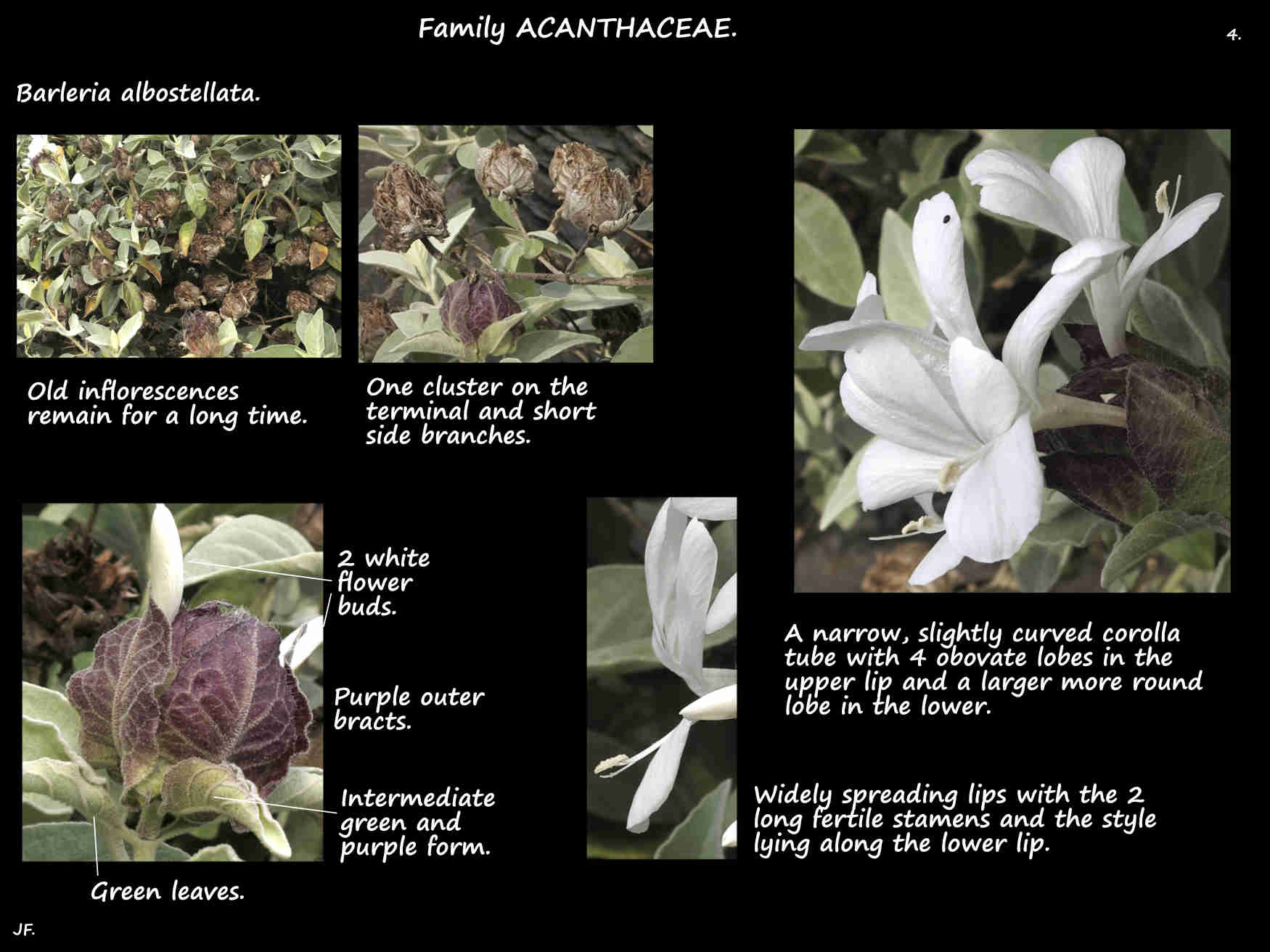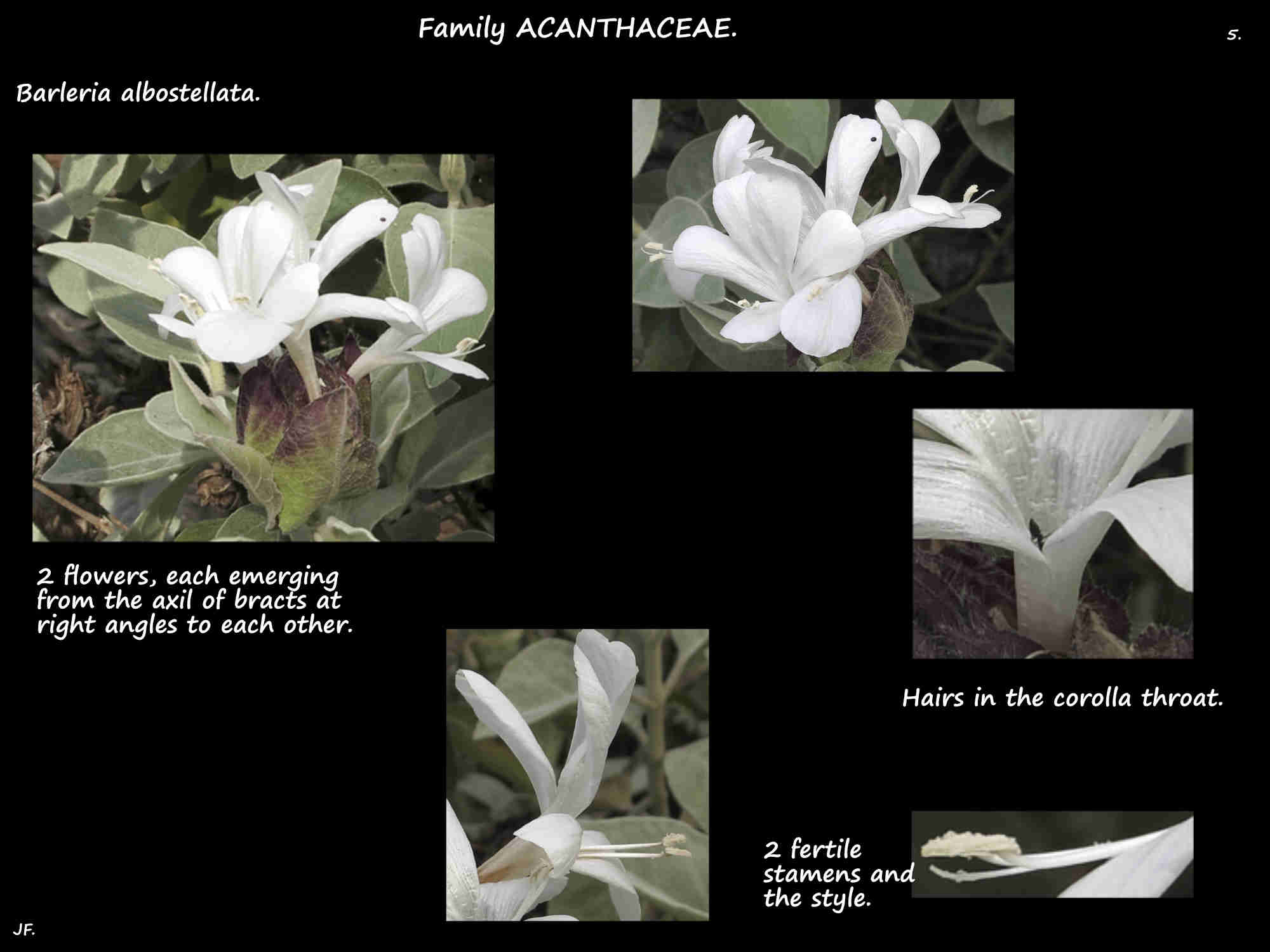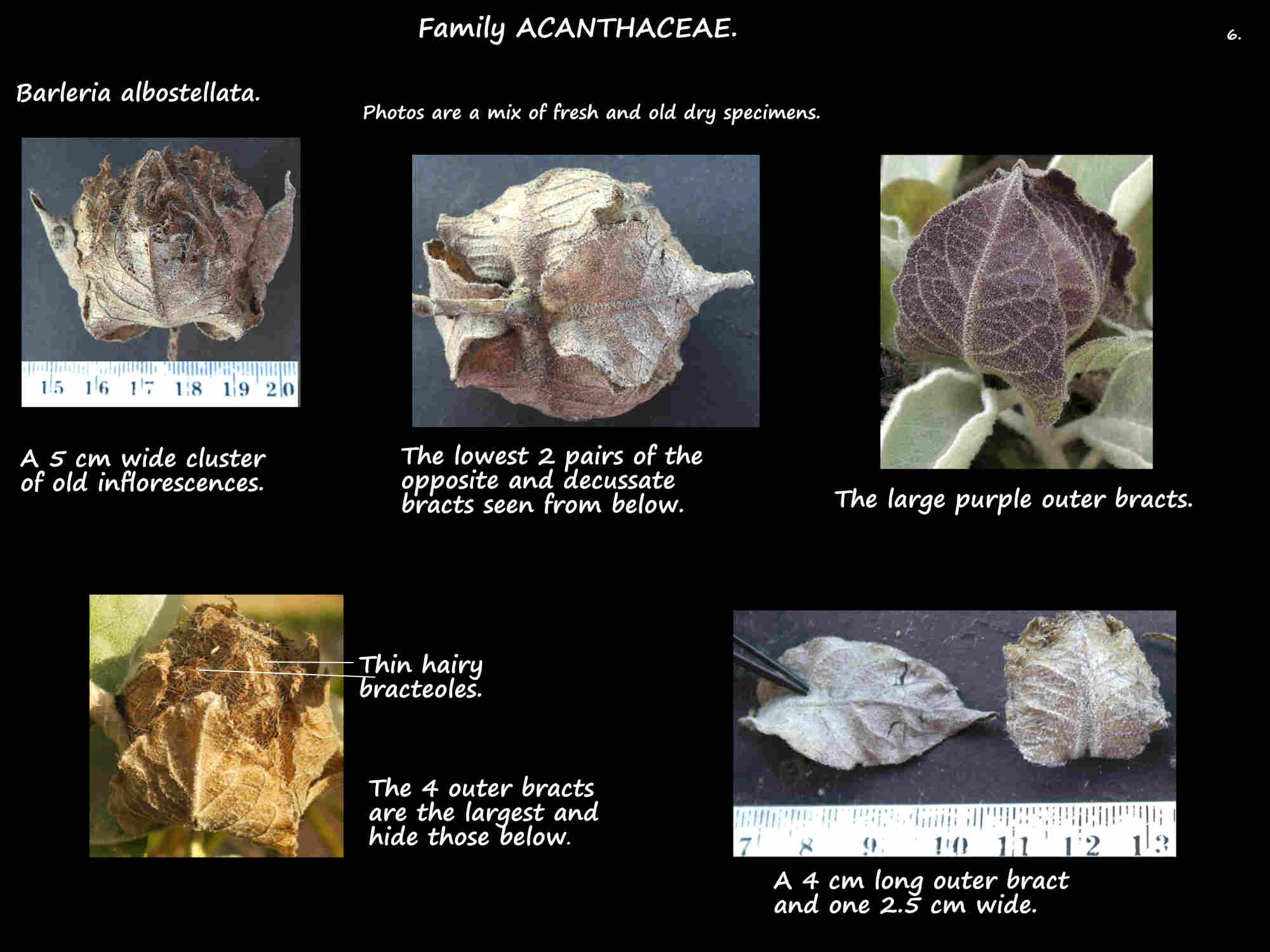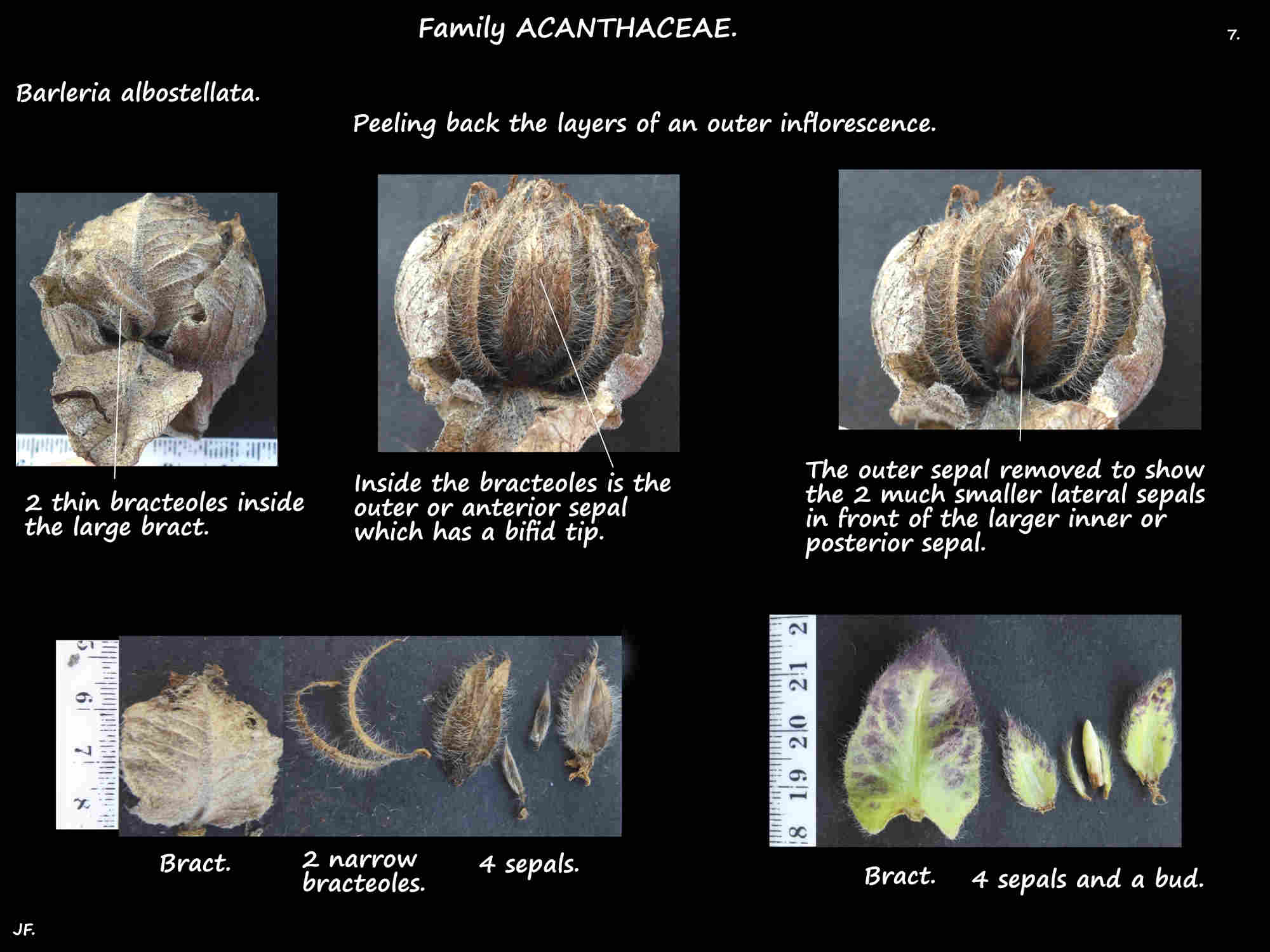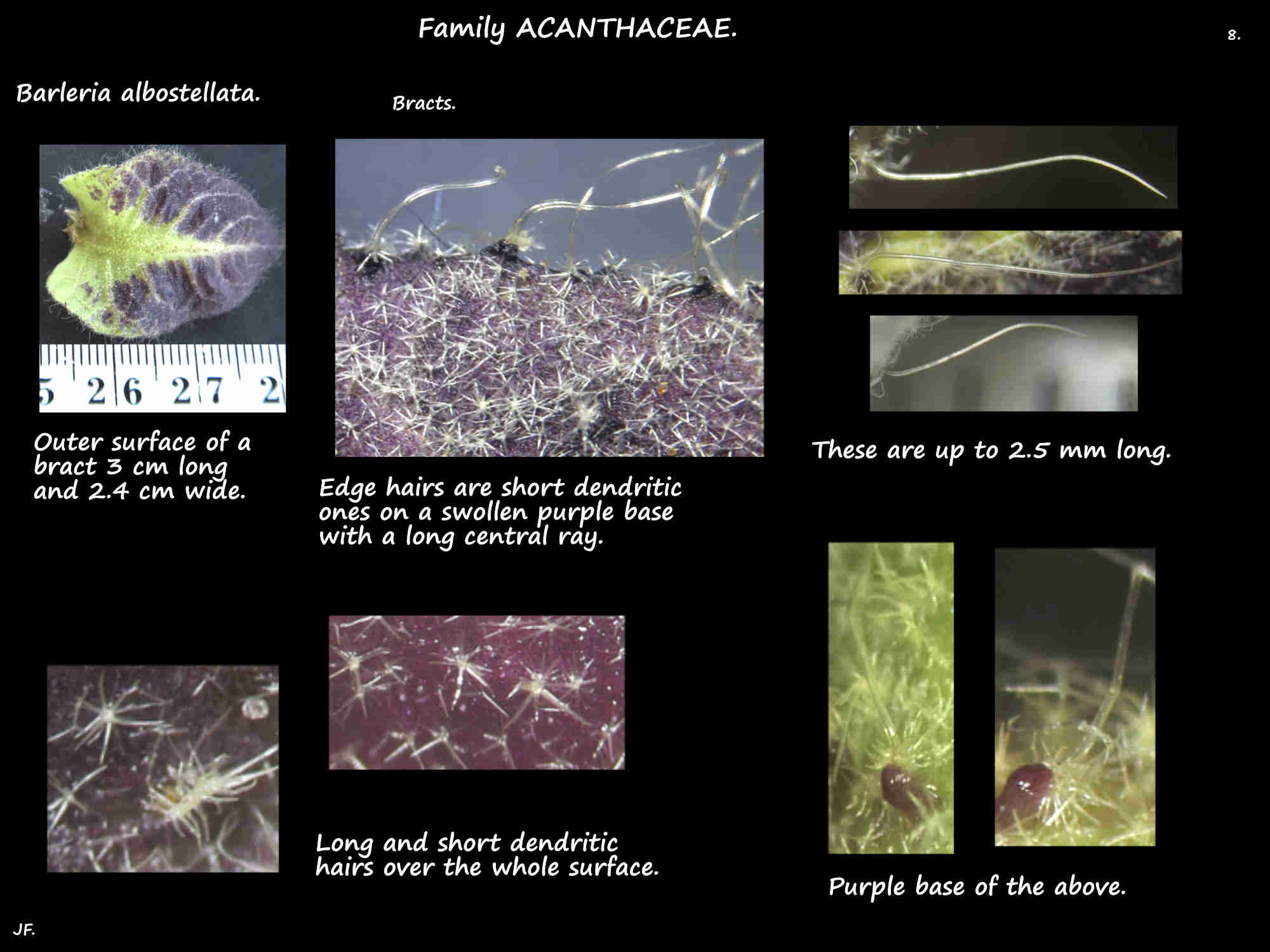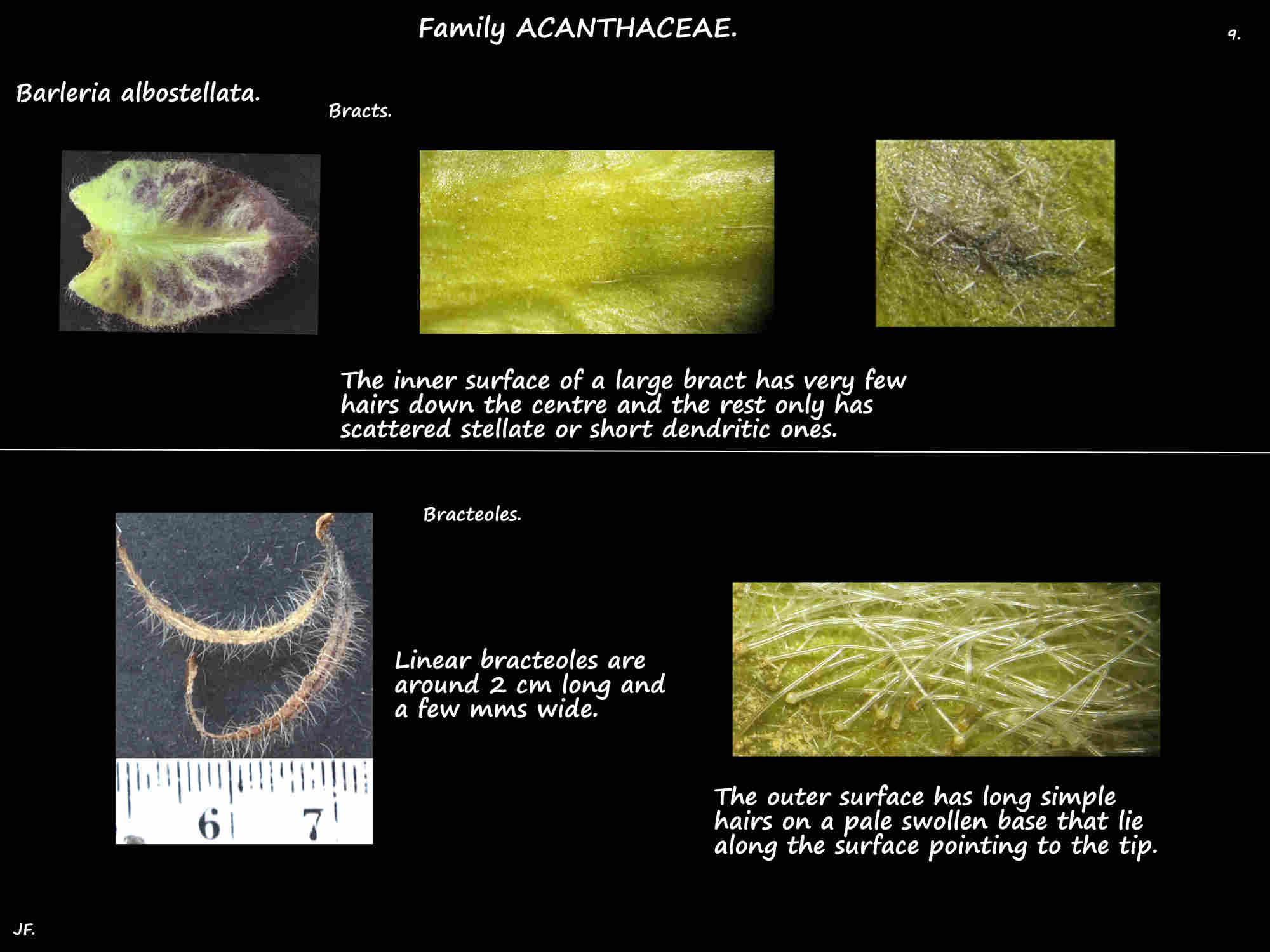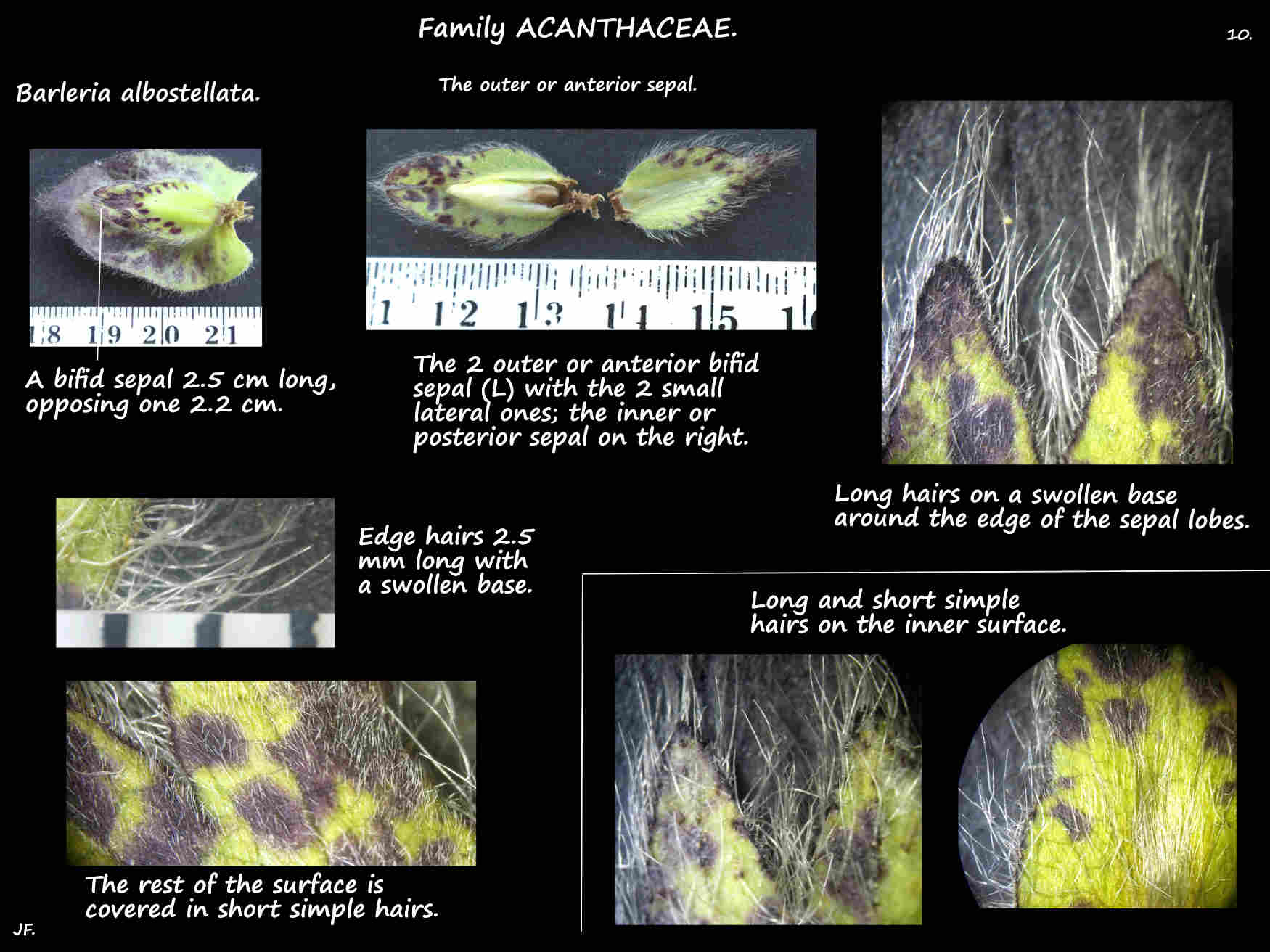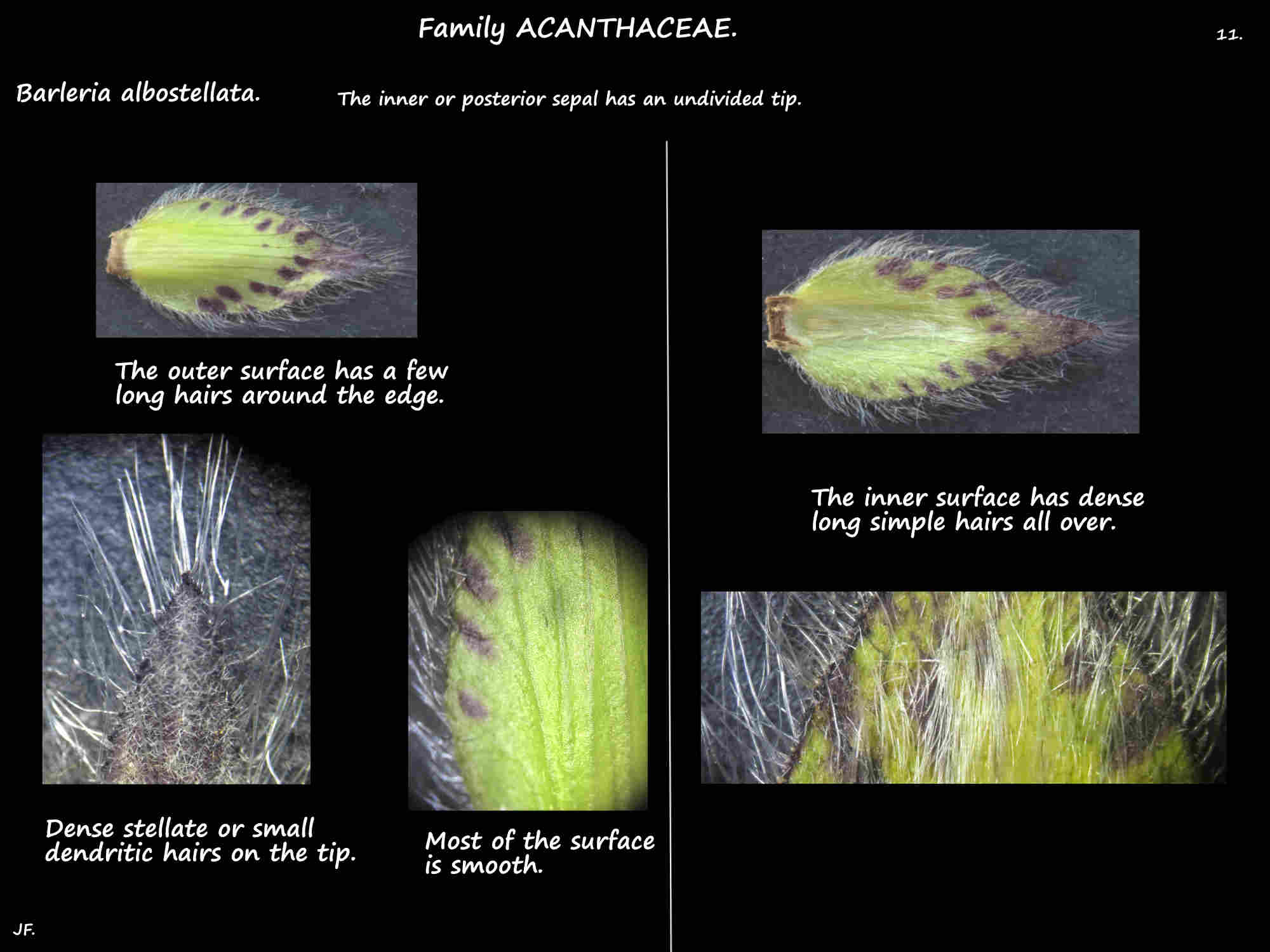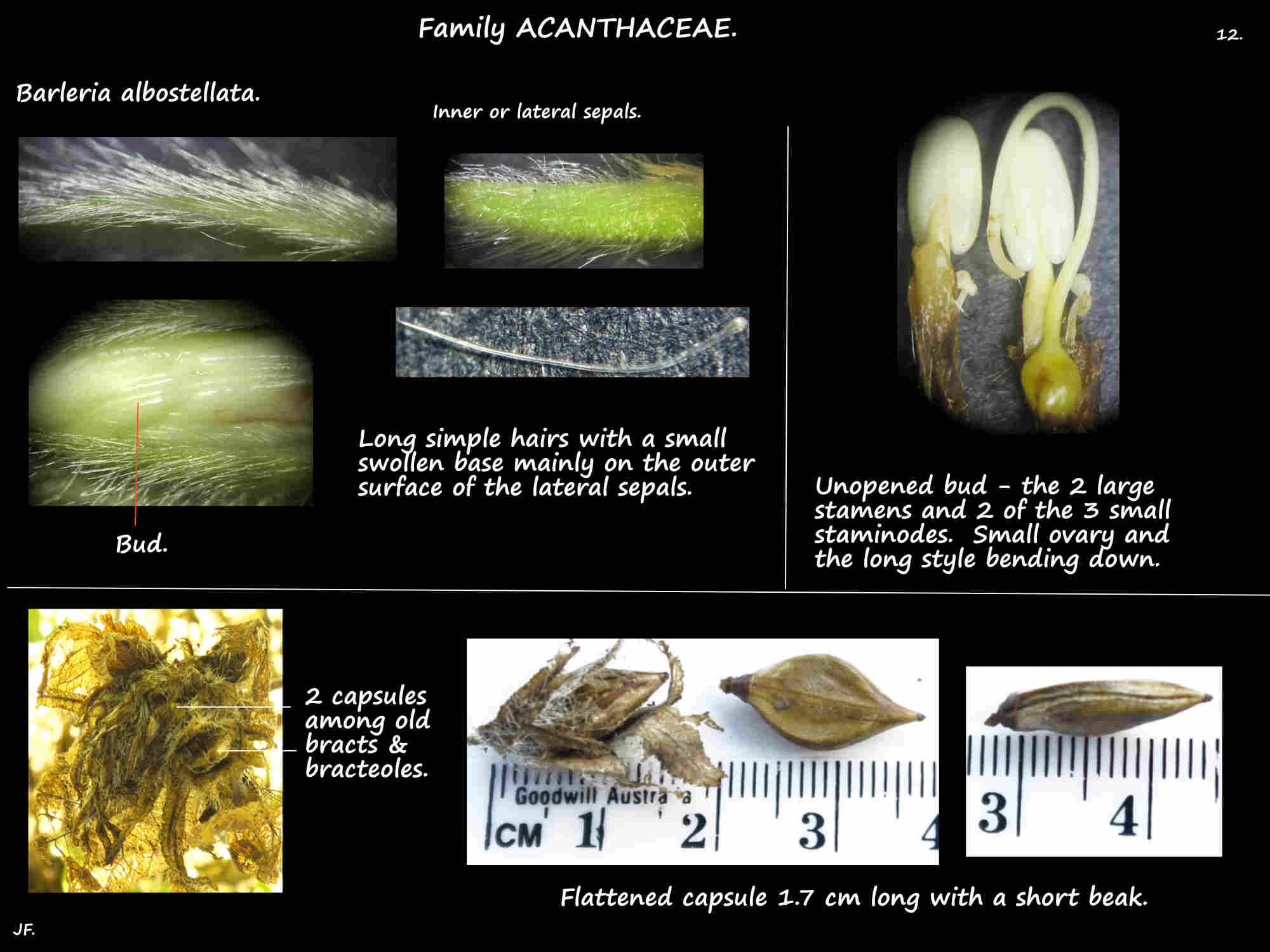Barleria albostellata.
Grey Barleria are small shrubs usually under 0.5 m high but they can reach 1.5 m.
Depending on conditions they are evergreen to deciduous.
Young branches and leaves are densely covered in hairs giving the shrubs a greyish appearance.
Older woody stems are brown and hairless.
The leaves, on petioles 1 to 2 cm long are opposite and decussate.
The upper grooved surface of the petiole has less dense hairs than the rest of it.
The wide ovate leaves are up to 6 or 7 cm long.
The rounded base forms short wings on the petiole, the tip tapers to a point and the edge is smooth.
The pinnate veins are prominent on the lower surface.
Young leaves are whitish then grey-green due to the hairs.
Hairs remain dense on the lower surface but gradually wear off the upper surface with the leaves becoming greener.
Hairs on all parts, including the inflorescences can be one or more of the following.
: simple hairs sometimes with a clear or purple swollen base.
These are usually long and either straight or curved up towards the top of the part.
: dendritic (tree-like) hairs are nearly 1 mm long.
: stellate hairs with or without a long central ray.
The hairs are white, cream or yellowish.
Solitary flowers are subtended by bracts which are modified leaves and, like them are in opposite and decussate pairs.
A few very close pairs of inflorescences form a dense cluster up to 5 cm wide at the branch ends.
There are usually a few flowers open except in mid winter.
Bracts.
The outer pairs of bracts are the largest and cover those below.
They are ovate from 2.5 to 5 cm long and around 2.5 to 3 cm wide.
Initially green the edges become purple and this spreads over the whole bract.
The midrib and pinnate veins are prominent on the outer or lower surface.
Old dry brown and papery bracts remain around the fruit.
The outer bract surface is covered in stellate and short dendritic hairs.
The veins and especially the edge have short dendritic hairs with a long central ray up to 2.5 mm long.
Some of these are on a swollen clear, yellowish or purple bulb-like base.
The inner surface has less purple areas and the wide midrib has a very few hairs while the rest of the surface
has small scattered stellate or short dendritic hairs.
Bracteoles.
The linear bracteoles are around 2.4 cm long by 3 mm wide.
The outer surface and edge have long hairs with a swollen base.
Sepals. The 4 sepals in the calyx are in 2 pairs of very different sizes.
a.) The outer or anterior sepal is easily recognised as it has a bifid tip with pointed lobes.
It can be up to around 2.7 cm long and 1 cm wide.
It has long simple hairs on a swollen base around the edge and short simple ones on the rest of both surfaces.
b.) The opposite posterior or inner sepal is slightly smaller being up to around 2.5 cm long and under 1 cm wide
with similar long edge hairs.
The outer surface has dense stellate or small dendritic hairs on the tip but most of the surface has no hairs and
is smooth and green. The inner surface has dense long simple hairs.
c.) Inside the two large sepals is the lateral pair which are linear and only around 1 cm long.
They have long simple hairs which are most dense on the outer surface.
The white trumpet-shaped flowers are typical of Barleria with a tubular base and 2 widely flaring lips.
There are 4 obovate lobes in the upper lip and a larger rounder one in the lower.
Flowers have a narrow slightly curved corolla tube up to 3.5 cm long.
The lobes are up to 2.5 cm long, the 4 upper are around 9 mm wide and the lower one is 12 to 14 mm wide.
There are 2 fertile stamens up to 3.5 cm long and 3 small staminodes.
A cup-shaped nectary disc surrounds the ovary which has 2 locules each with 2 ovules.
The fruit are hard capsules around 1.5 cm long with a short beak.
The hairy seeds are ejected by a retinaculum or jaculator.
(For a more detailed description see Barleria cristata which is very similar.)
J.F.

